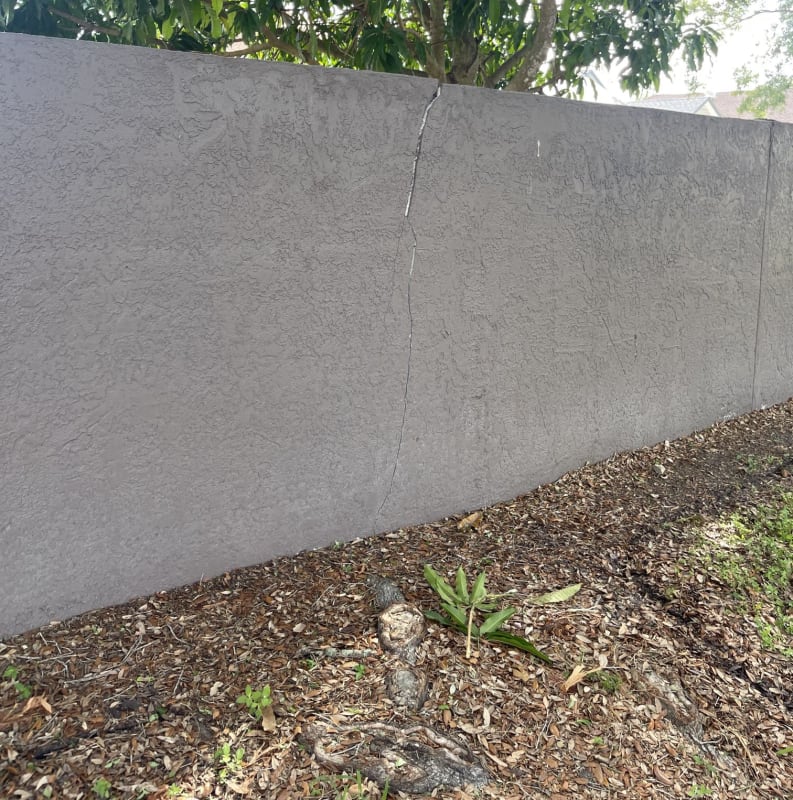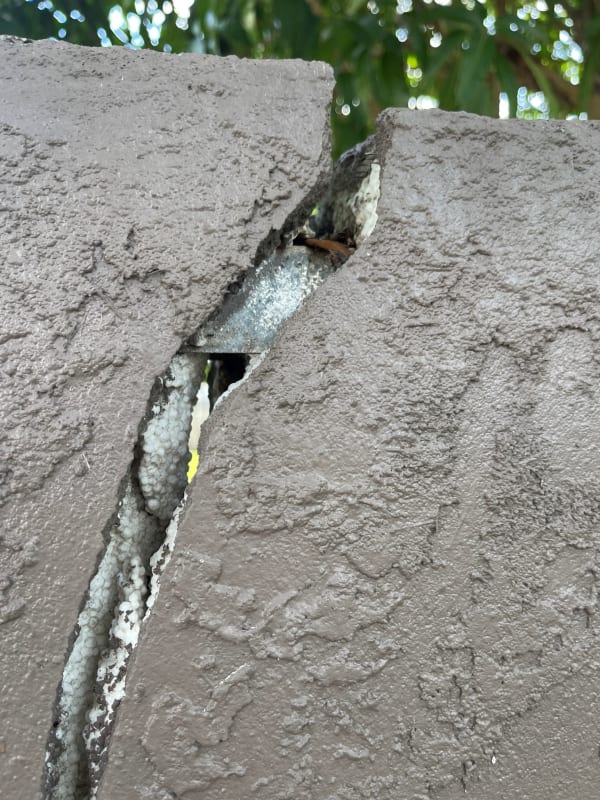DB27
Structural
- May 21, 2014
- 16
Has anyone seen a site wall constructed similarly to this? The 6ft tall site wall appears to be constructed with metal studs,foam, and stucco coating. I was able to detect vertical supports at 6' on center, which seems like a wide span for this freestanding wall. I'm looking to determine the optimal method for repairing the cracks.







